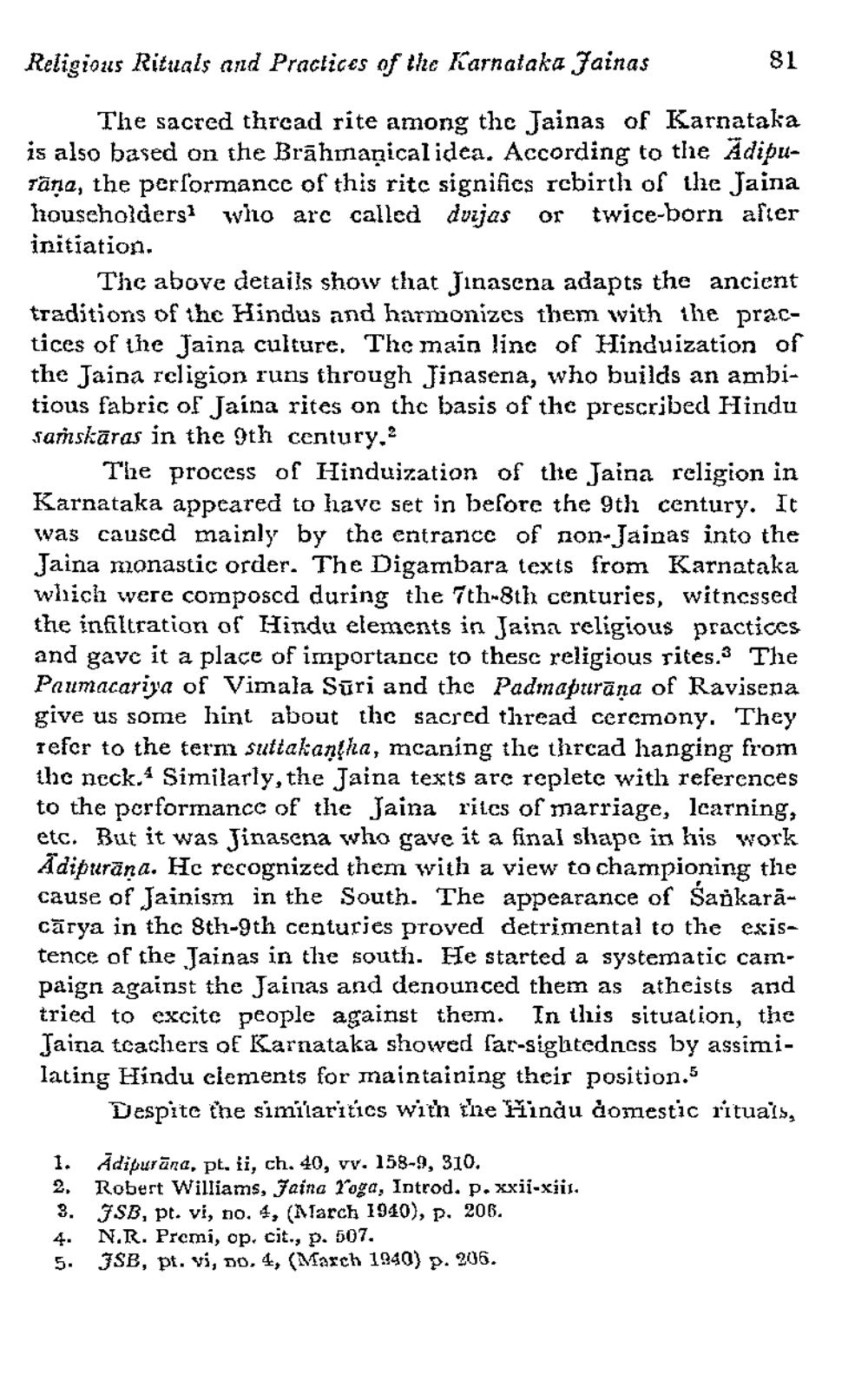________________
Religious Rituals and Practices of the Karnataka Jainas
The sacred thread rite among the Jainas of Karnataka is also based on the Brāhmaṇical idea. According to the Adipurana, the performance of this rite signifies rebirth of the Jaina householders who are called dujas or twice-born after initiation.
81
The above details show that Jinasena adapts the ancient traditions of the Hindus and harmonizes them with the practices of the Jaina culture. The main line of Hinduization of the Jaina religion runs through Jinasena, who builds an ambitious fabric of Jaina rites on the basis of the prescribed Hindu samskaras in the 9th century.2
The process of Hinduization of the Jaina religion in Karnataka appeared to have set in before the 9th century. It was caused mainly by the entrance of non-Jainas into the Jaina monastic order. The Digambara texts from Karnataka which were composed during the 7th-8th centuries, witnessed the infiltration of Hindu elements in Jaina religious practices and gave it a place of importance to these religious rites. The Paumacariya of Vimala Suri and the Padmapuraṇa of Ravisena give us some hint about the sacred thread ceremony. They refer to the term suttakaṇṭha, meaning the thread hanging from the neck. Similarly, the Jaina texts are replete with references to the performance of the Jaina rites of marriage, learning, etc. But it was Jinasena who gave it a final shape in his work Adipurāna. He recognized them with a view to championing the cause of Jainism in the South. The appearance of Sankaracarya in the 8th-9th centuries proved detrimental to the existence of the Jainas in the south. He started a systematic campaign against the Jainas and denounced them as atheists and tried to excite people against them. In this situation, the Jaina teachers of Karnataka showed far-sightedness by assimilating Hindu clements for maintaining their position.5
Despite the similarities with the Hindu domestic rituals,
1. Adipurāna, pt. ii, ch. 40, vv. 158-9, 310.
2,
Robert Williams, Jaina Yoga, Introd. p. xxii-xii.
3. JSB, pt. vi, no. 4, (March 1940), p. 206.
4.
N.R. Premi, op. cit., p. 507.
5. JSB, pt. vi, no. 4, (March 1940) p. 206.




